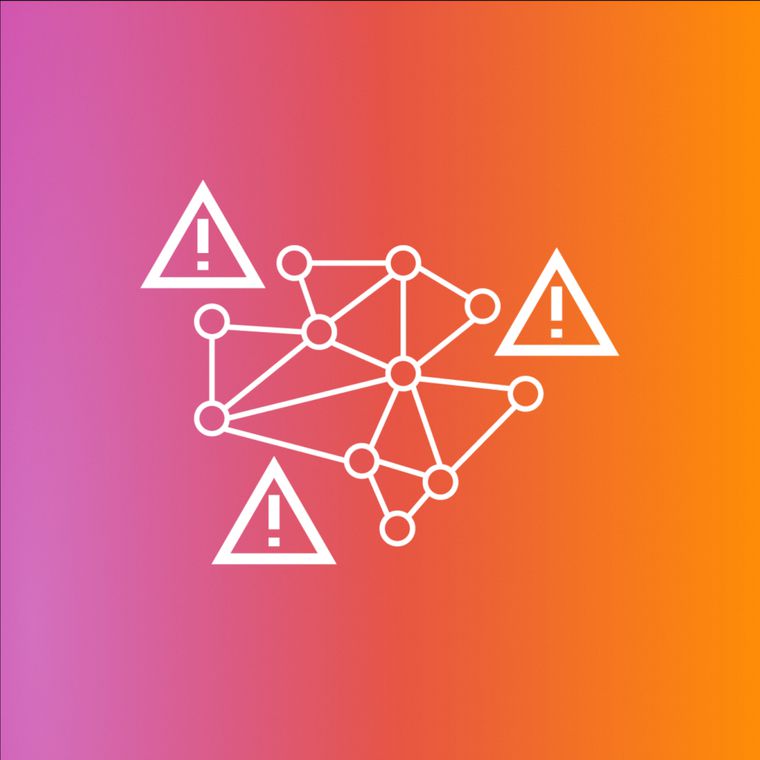Essential Email Security Solutions Stack Every Organization Needs
Build the right email security solutions stack to stop modern attacks and protect organizational communications.
October 1, 2025
Email attacks compromise more organizations than any other threat vector. A single phishing click exposes sensitive data, hijacks privileged accounts, and triggers costly incident response that disrupts business operations for weeks.
Traditional perimeter defenses cannot stop modern email threats. Secure email gateways, spam filters, and periodic training often miss zero-day malware, business email compromise, and social engineering campaigns that exploit human psychology rather than technical vulnerabilities. These attacks succeed because they manipulate trust and urgency rather than deploying obvious malicious code.
Organizations need multilayered email security that combines behavioral AI, automated threat response, identity protection, real-time intelligence, cloud integration, and continuous user training to detect and block sophisticated attacks before damage occurs. That said, here are some of the essential components that need to be a part of every organization’s email security solutions stack.
1. Secure Email Gateways (SEGs)
SEGs filter spam and block known malware at the edge of the mail environment. Acting as dedicated proxies via MX record changes, they parse, score, and deliver messages, quarantine or reject them using signature matching, reputation checks, and content policies.
Core capabilities include scanning against malicious IPs and domains, sandboxing URLs and attachments, enforcing data loss prevention (DLP) rules, and providing encryption for compliance. SEGs effectively reduce spam and block many commodity attacks, though zero-day exploits, vendor email compromise, and account takeover fraud often bypass these defenses when they lack traditional malicious indicators.
These social engineering tactics leverage legitimate-looking communications, highlighting the need for behavioral detection methods that identify threats through communication patterns alongside traditional signature-based approaches.
2. Identity Threat Detection and Response (ITDR)
ITDR monitors account activity by continuously analyzing sign-in logs, privilege changes, and session data against user behavioral baselines. When detecting unusual patterns, such as impossible geography logins or mass message forwarding, systems can challenge users with multifactor authentication, suspend tokens, and alert security teams within seconds.
The key capabilities include tracking authentication events across email and cloud services, deploying automated countermeasures like session revocation and password resets, and integrating with IAM and SIEM platforms for coordinated threat response.
This identity-focused approach helps reduce containment time from hours to minutes by addressing the gap between initial compromise and privilege escalation. Additionally, dark web credential monitoring and external threat indicators provide additional context for comprehensive identity risk assessment.
3. Behavioral AI for Advanced Phishing Detection
Behavioral AI establishes communication baselines for users and vendors, helping detect business email compromise (BEC) and spear phishing attempts that lack traditional malicious indicators. The technology profiles headers, tone, timing, and payloads while correlating identity, device, and location telemetry.
Natural language processing (NLP) identifies potential social engineering cues, impersonation attempts, and unusual financial requests that static rules might overlook. API integration with Microsoft 365 and Google Workspace enables deployment without MX changes and provides post-delivery remediation capabilities.
Models continuously adapt using global threat intelligence to identify emerging campaigns. By understanding normal patterns, AI helps reduce false positives while surfacing potentially high-risk messages, such as urgent payment requests from unfamiliar domains or unusual geography logins preceding email distributions.
4. Threat Intelligence and Continuous Monitoring
Real-time threat intelligence enhances email defenses by correlating external indicators with live email telemetry. Systems ingest threat feeds, normalize data for specific environments, and automatically update detection rules as new campaigns emerge.
Continuous monitoring streams logs from cloud mailboxes, endpoints, and SaaS platforms into analytics engines that cross-reference events against the latest intelligence. When external feeds identify new phishing lures, platforms can retroactively scan and quarantine messages that contain those indicators.
Integration with SIEM platforms maintains unified risk views while enabling timely rule updates and risk score adjustments. This continuous approach helps identify attacks more quickly than periodic scanning, though detection benefits most when paired with rapid response capabilities to contain identified threats.
5. Automated Incident Response and Remediation
Automation reduces threat dwell time by executing rapid containment when behavioral AI, SEGs, or SIEM flags suspicious emails. Playbooks can verify alerts, map affected recipients, and launch countermeasures, including removing malicious messages from inboxes, blocking sender domains, temporarily locking accounts, initiating password resets, revoking OAuth tokens, and disabling forwarding rules.
SOAR integration coordinates responses across identity, endpoint, and network controls while maintaining detailed audit trails for compliance. This consistency and speed become particularly valuable when dealing with high-volume phishing campaigns.
Automated remediation helps prevent single emails from escalating into broader compromises, allowing analysts to focus on complex threat investigations and proactive hunting rather than repetitive triage tasks.
6. Cloud and SaaS Security Integration
API-based integration enhances email security by extending it to collaboration platforms, where attacks are increasingly occurring. Direct connections to cloud inboxes enable post-delivery inspection and consistent detection across communication channels without requiring MX record changes.
Unified control planes consolidate policy management for email, file sharing, and chat applications. Cross-channel anomaly detection, powered by organizational behavioral models, helps ensure that threats identified in email trigger appropriate protection in connected SaaS services.
This approach provides immediate historical data access without interrupting mail flow, enables rapid deployment through API connections, and maintains visibility across diverse communication platforms. Seamless integration helps behavioral intelligence developed for email protect multiple collaboration surfaces, supporting distributed workforces using various cloud applications.
7. User Awareness and Training Programs
Employees strengthen organizational defenses when equipped to recognize social engineering, evaluate link safety, and report suspicious activity. Modern programs move beyond annual presentations to continuous microlearning delivered through simulated phishing exercises that reflect current tactics, targeted modules within email clients, contextual coaching during potentially risky actions, and real-time prompts when interacting with suspicious content.
AI-powered coaching seamlessly integrates security training into daily workflows, minimizing disruptions to productivity. Programs track metrics, including reporting rates and click patterns, while automatically maintaining compliance records.
This approach develops security awareness through regular, manageable interactions rather than infrequent intensive sessions. Well-trained users provide valuable human intelligence that complements automated controls, helping identify sophisticated threats that may bypass technical defenses.
Build Your Defense-in-Depth Strategy Today
Building an effective email security requires seamlessly integrating multiple layers addressing distinct vulnerabilities. Combined frameworks achieve a comprehensive security posture, outperforming individual point solutions. AI-driven intelligence enables a unified approach, enhancing prevention, detection, and response capabilities across all facets of email security.
These seven layers mentioned above create resilient defenses that evolve with the threat landscape. Each component strengthens overall security while shared analytics and automation reduce attacker dwell time.
There's a reason why organizations are moving beyond single-point solutions to address email security challenges. Ready to build a comprehensive email defense with behavioral AI? Get a demo to see how Abnormal can strengthen your security stack against sophisticated threats.
Related Posts
Get the Latest Email Security Insights
Subscribe to our newsletter to receive updates on the latest attacks and new trends in the email threat landscape.


